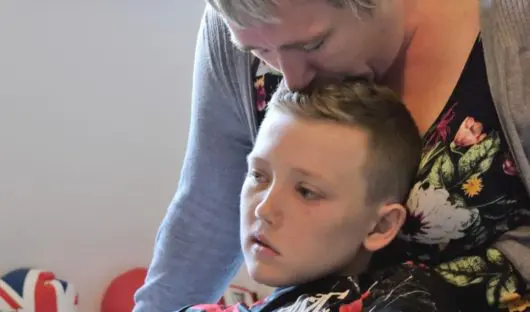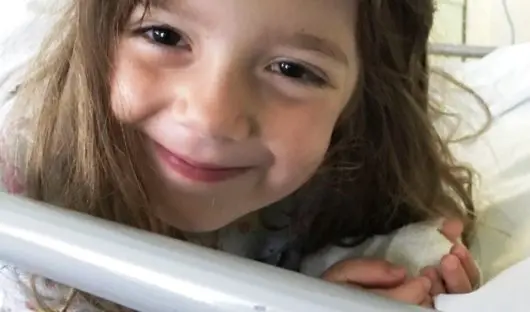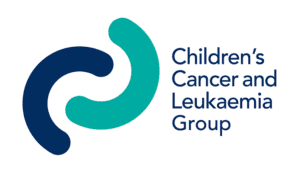Retinoblastoma
Retinoblastoma is an uncommon eye cancer that usually affects children under five, although it can affect children of any age. About 40 to 50 cases of retinoblastoma are diagnosed in the UK each year. Treatment is very effective and nearly all (98 out of 100) children with retinoblastoma are cured.
Retinoblastoma develops in the light-sensitive lining of the eye (called the retina).
There are two forms of retinoblastoma:
- A heritable form – this is genetic or inherited. There are often tumours in both eyes (bilateral) or sometimes only in one eye.
- A non-heritable form – this is not passed on in the family. There is one tumour in only one eye (unilateral).
2014 Cross Section of Eye.
Causes of retinoblastoma
In nearly all cases, retinoblastoma is caused by an abnormaility in the retinoblastoma gene (RB1). In the heritable form of retinoblastoma, which accounts for about two in every five cases, this abnormal gene is either inherited from a parent or happens for the first time at an early stage of development in the womb.
Genetic counselling and support is available for families in which a member has retinoblastoma. Not all children of a parent with retinoblastoma will inherit this gene, but children born into families with a history of retinoblastoma are offered blood testing to look for the abnormal gene. They are also usually checked (screened) soon after birth for signs of retinoblastoma. This means that treatment can be started early if a tumour does develop.
Screening usually starts shortly after birth and is repeated regularly. An eye specialist examines the eye, while shining a light into it with an ophthalmoscope. In younger children this may need to be done under a general anaesthetic.
In the non-heritable form of retinoblastoma, the abnormality in the RB1 gene occurs in just one cell on the retina. The reason for this happening is unknown.
Signs and symptoms
In some children with a family history of retinoblastoma, it is picked up by screening before they have any symptoms.
If there’s no family history of retinoblastoma, the first sign of the condition is often a white pupil that does not reflect light (leucocoria). This may be picked up when a picture of your child is taken using flash photography. The pupil of the affected eye may look white in the photograph (see below).
Some children may have a squint or, if the tumour is large, they may have a painful eye.
Read the Childhood Cancer Eye Trust’s symptom checklist for more information.
How retinoblastoma is diagnosed
Tests are likely to involve an examination under anaesthetic (EUA) where an eye specialist (ophthalmologist) examines your child’s eye while they’re asleep. Unlike nearly all other types of cancer, retinoblastomas can be diagnosed just by their appearance. So it’s not usually necessary to take a sample of tissue (a biopsy). Your child will have several more EUAs to check how treatment is progressing.
When a retinoblastoma is diagnosed, your child may have some other tests to check the exact position and size of the tumour, and whether it has begun to spread into surrounding structures. This is known as staging.
They may have some of the following tests:
- An ultrasound scan. This is a painless scan that uses sound waves to examine the eye and the surrounding area.
- An MRI (magnetic resonance imaging) scan. This uses magnetism to build up a detailed picture of the eye and the head.
- A lumbar puncture. The doctor inserts a fine needle between the bones in the lower spine to remove a sample of the fluid from around the brain and spinal cord (cerebrospinal fluid). The fluid is examined under a microscope to check whether there are any cancer cells present.
- A bone marrow sample. This may be taken to check whether there are any cancer cells in the bone marrow (where our blood cells are made). The doctor inserts a needle into the hip bone and draws some of the bone marrow out with a syringe so that it can be checked for any cancer cells.
- A bone scan. This involves taking a series of x-rays to check for signs of any spread to the bones.
- A blood test. This may be taken for genetic testing for the Rb gene. The results of this test can take some months.
The doctor or a specialist nurse will explain more about the tests that your child needs.
Staging
The stage of a cancer is a term used to describe its size and whether it has spread from where it first started. Knowing the stage of your child’s retinoblastoma helps the doctors to decide on the most appropriate treatment.
The following staging system is commonly used for retinoblastoma:
Intraocular retinoblastoma: There is cancer in one or both eyes, but it has not spread to other parts of the eye or the tissues surrounding the eye. This stage may be sub-divided into five grades (A–E), depending on the size and position of the cancer and on whether there’s any damage to the eye.
Extraocular retinoblastoma: The cancer has spread outside the eye into surrounding tissue, or to other parts of the body.
Treatment
This depends on the number, position and size of the tumours in the eye. The aim of treatment is firstly to get rid of the cancer and secondly to try to keep the sight in the eye. Some treatments may cause changes to the vision in the affected eye. Your child’s specialist will talk to you about the possible risks as well as the advantages of the treatment.
For smaller tumours, treatment is given to the eye itself (called local therapy), while your child is asleep and under anaesthetic. One of the following methods may be used:
Cryotherapy
This is used to freeze the tumours. More than one session may be necessary, in which case they are usually done at monthly intervals.
Laser therapy
A laser is directed through the pupil and used to heat the tumour. Your child may need a number of sessions of laser therapy (under general anaesthetic) at intervals of 3-4 weeks.
Plaque
A small radioactive disc is stitched on the outside part of the eye overlying the tumour. This disc needs to stay in place for up to four days while the radiation destroys the cancer cells. This is done for slightly larger tumours, or tumours that have not been successfully treated with other methods.
Thermotherapy
This process uses heat to destroy the cancer cells and may be combined with chemotherapy or radiotherapy, as heat can improve the effectiveness of these treatments. The heat is produced by a laser, which is directed at the tumour.
Treatment for larger tumours
These can be treated in a number of ways, including:
Chemotherapy
This is the use of anti-cancer (cytotoxic) drugs to destroy cancer cells. It may be given before the local treatments mentioned above, to help shrink the tumour and make treatment more successful. Chemotherapy can also be used if the cancer has spread to other parts of the body, or if there’s a risk that it may spread. The chemotherapy drugs most commonly used to treat retinoblastoma are carboplatin, etoposide, and vincristine.
Newer techniques include giving chemotherapy directly into the artery (the blood vessel) that supplies the eye (intra-arterial chemotherapy) or injecting chemotherapy into the central gelatinous part of the eye (intra-vitreal chemotherapy). These are generally used when the tumour has not responded to initial treatment and the clinical team will discuss which is most suitable for your child.
Surgery
If the tumour is very large and the vision in the eye is lost, your child is likely to need an operation to remove the eye. The specialist will only do this if it is absolutely necessary. An artificial eye is then fitted.
Radiotherapy
Radiotherapy treats cancer by using high energy rays from a machine to destroy the cancer cells, while doing as little harm as possible to normal cells. It can be given to the whole eye but does have some effect on the surrounding tissue. Radiotherapy for retinoblastoma is normally only used when other treatments have not worked well.
Follow-up care
At least 9 out of every 10 children with retinoblastoma are cured. Following treatment, the eye specialist will frequently examine your child’s eye under anaesthetic to check that the retina is healthy, the cancer has not come back, and no new tumours have developed. Follow-up is usually in a clinic for childhood cancers, called a paediatric oncology clinic. In this clinic, their general health and any long-term effects of treatment will be monitored.
Children with heritable retinoblastoma will be given genetic counselling when they are old enough to understand it.
Having the heritable form of retinoblastoma means an increased risk of developing other types of cancer later in life. Your child will be followed up closely into adulthood. They will be encouraged to get any new symptoms, such as a lump, checked early, and to have a healthy lifestyle to help to reduce cancer risk. This includes:
- Avoid smoking
- Careful skin protection in the sun (SPF30 as a minimum)
- Healthy diet
- Exercise
- Moderate alcohol
This information was written by the Children’s Cancer and Leukaemia Group (CCLG)
You might also want to look at
Telling your child they have cancer
Knowing what information your child needs and which words to use when you tell them about cancer.
Find out more
Staying in hospital with your child – what you’ll need
What to expect if your child is staying on a children' cancer ward and what you'll need to take.
Find out more
Help your child cope with side effects of cancer treatment
Every child copes differently with treatment and side effects. Here's what to expect.
Coping with side effects
USEFUL INFORMATION AND SUPPORT
Get a CLIC Sargent grant
It’s not right that young people and parents have to worry about money when they need to focus on treatment and all that comes with it. So CLIC Sargent gives various grants, right from the moment of diagnosis, to help young people and families cope financially.
Find out more about getting a grantChildren's Cancer and Leukaemia Group (CCLG)
Find out more about retinoblastoma, including including diagnosis, staging and treatment from our friends at CCLG.
Visit the websiteJoin our Facebook group for parents
Share your stories and experiences with other parents. Get advice or share tips to help others, and become part of a supportive community.
Join the groupAre you a cancer dad?
Many dads spend less time in the hospital and don't get the same network of support. Feeling like you have to 'hold the fort' can be isolating and difficult, so it's extra important you have someone to talk to about your challenges.
Join our Mind the Chaps Facebook group for dads